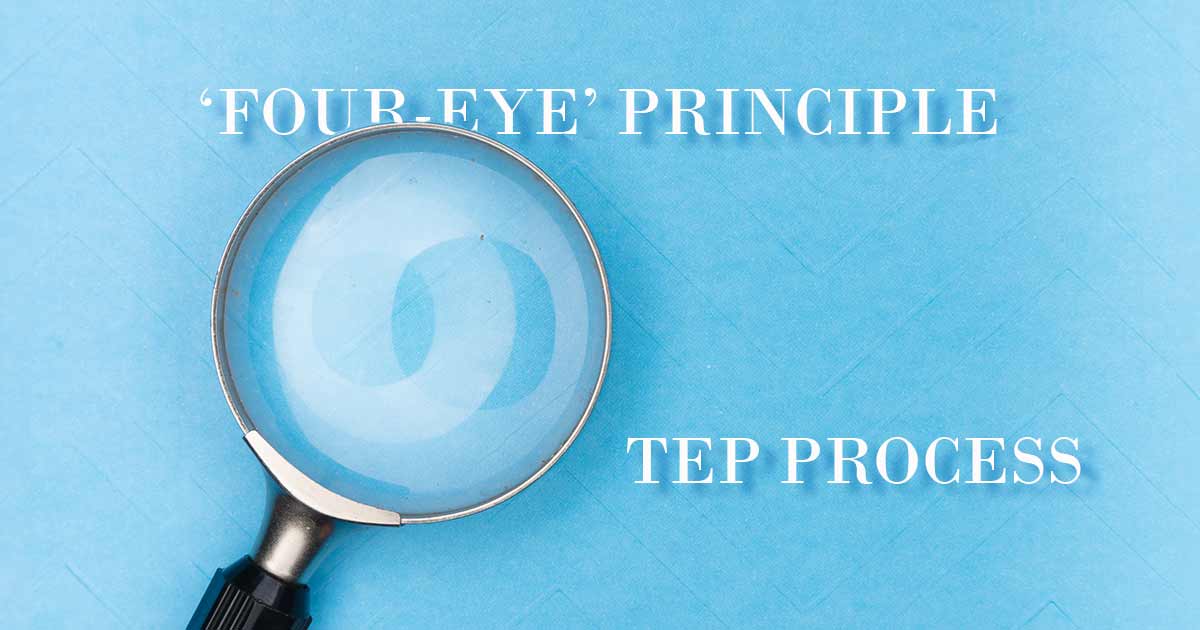If you have already researched the internet for translation and language services, you will no doubt have come across the terms ‘four-eye’ principle and TEP process several times.
In the ‘four-eye’ principle, a second linguist compares the target text with the source text to check whether the target text contains spelling, grammar or punctuation errors and whether the message of the source text is correctly conveyed in the target language following the criteria defined in the brief. This second step is referred to as revision by the ISO 17100 standard, which specifies it as a strict requirement during the translation process.
The best practice followed by most LSPs is the TEP approach. TEP is the acronym for translation, editing and proofreading. Within the TEP process, editing generally refers to the step after the translation, which is the bilingual checking. As a third step, proofreading is carried out, a monolingual check for remaining errors – typos, spelling mistakes and inconsistencies – and in the case of quality-wary LSPs, also for the reading flow.
Depending on the visibility and sensibility of the text, these two concepts can be extended by further quality assurance steps (e.g. review by a subject matter expert).
Multi-step approach or translation only?
You may be wondering whether this multi-step approach is really necessary. Or whether a translation-only approach using the services of a qualified translator could perhaps be sufficient. In order to answer these questions, several factors need to be taken into account.
Translation is a complex cognitive process during which multiple tasks are carried out:
- The source text is read and processed,
- ambiguities are identified,
- context is taken into account and researched where necessary,
- the style guide, termbase and brief are constantly mentally recalled and cross-checked,
- and the preceding and following sentences are considered to produce a sentence that fits into the natural flow of the text…
Since the human brain has a limited capacity and, as various studies have shown, multitasking leads to a higher frequency of errors, it is a natural consequence that errors due to faulty motor reactions, limitations of the working memory or suboptimal cooperation between short-term and long-term memory cannot be ruled out.
Although the translator of course revises his/her choice once he/she has made a decision and typed the translation, a long, thorough examination of a text leads to a certain word blindness, so that errors may be overlooked.
The bottom line
The aspects outlined above illustrate why the translation-only approach is not enough if you are aiming for a flawless text. However, whether a multi-step process is necessary also depends on how important the text is for your reputation or brand image and how visible it is. For private emails or translations that only serve the purpose of roughly capturing the content of the source text, the translation-only approach is probably sufficient.
Remember, however, that every text is a means of communication and also sends an implicit message. In addition to conveying facts and information, a text also has the potential to arouse sympathy among your target group and build a relationship. However, this is only possible with a carefully crafted text that shows your readers that you value their interest and attention.
Therefore, decide based on the goals and intentions you have with your text, as well as taking into account its visibility, which workflow is the most suitable for you.
Whatever choice you make, I will be happy to support you with the translation, revision/bilingual editing or proofreading of your text or help you to follow the ‘four-eye’ principle or TEP process by collaborating with my network of colleagues.

